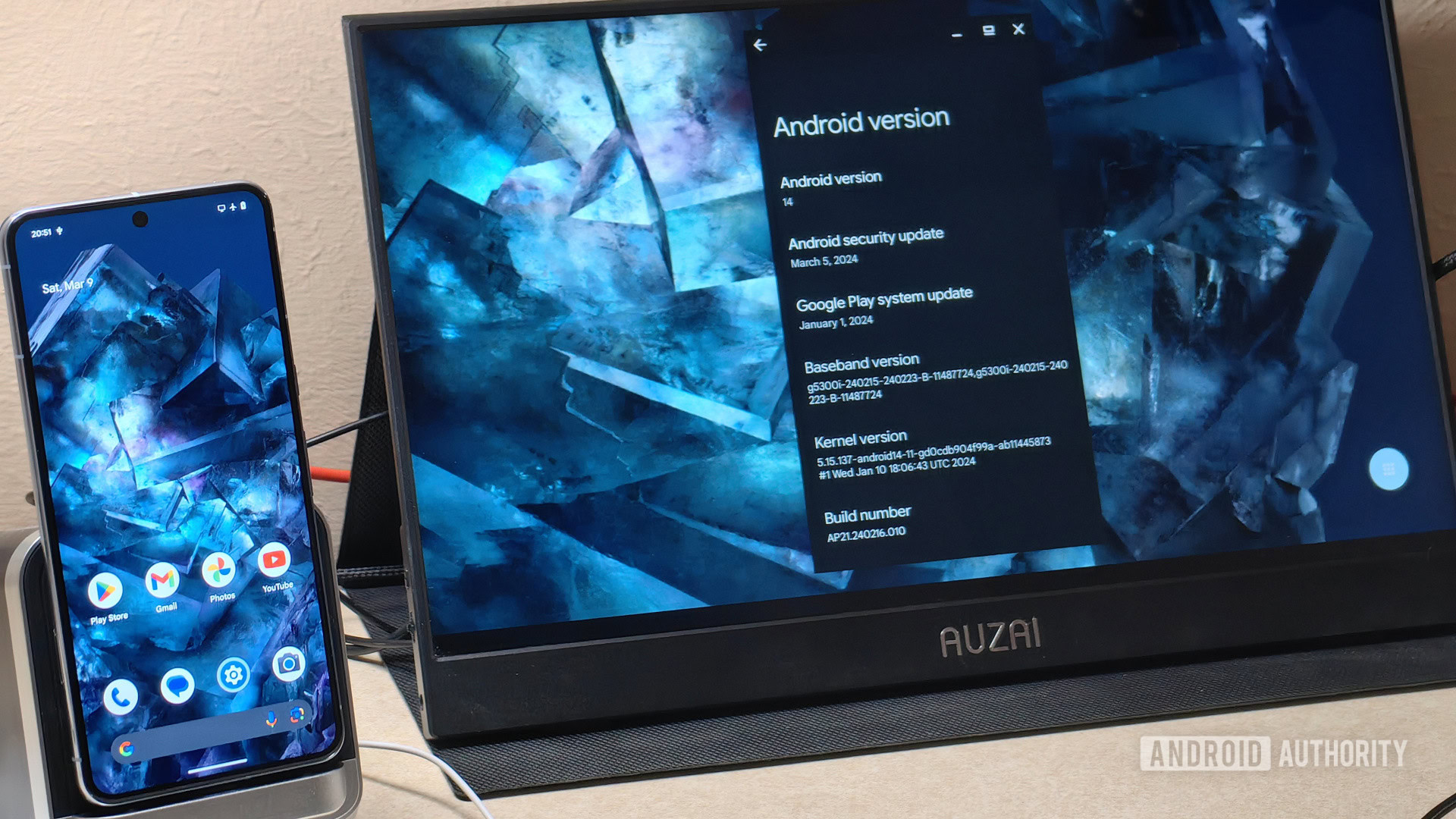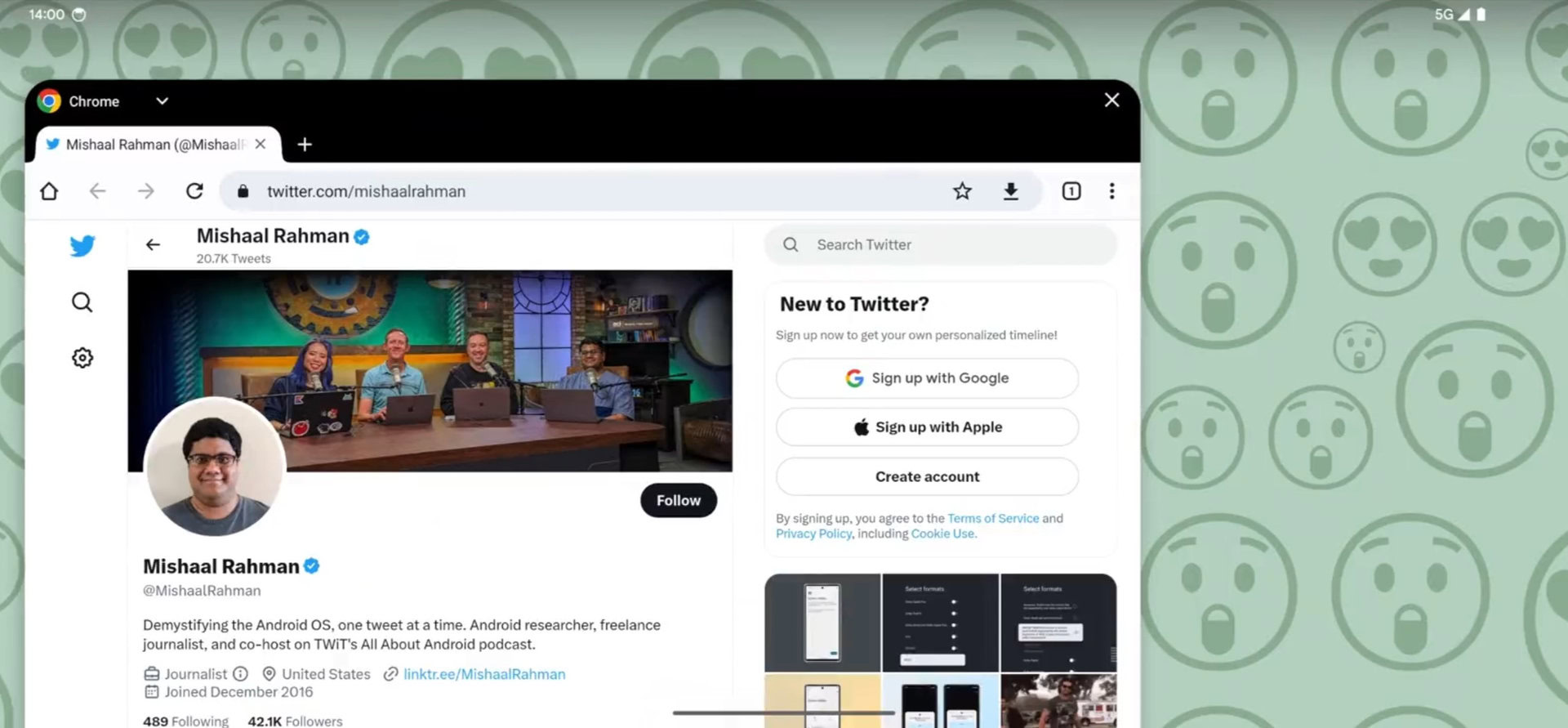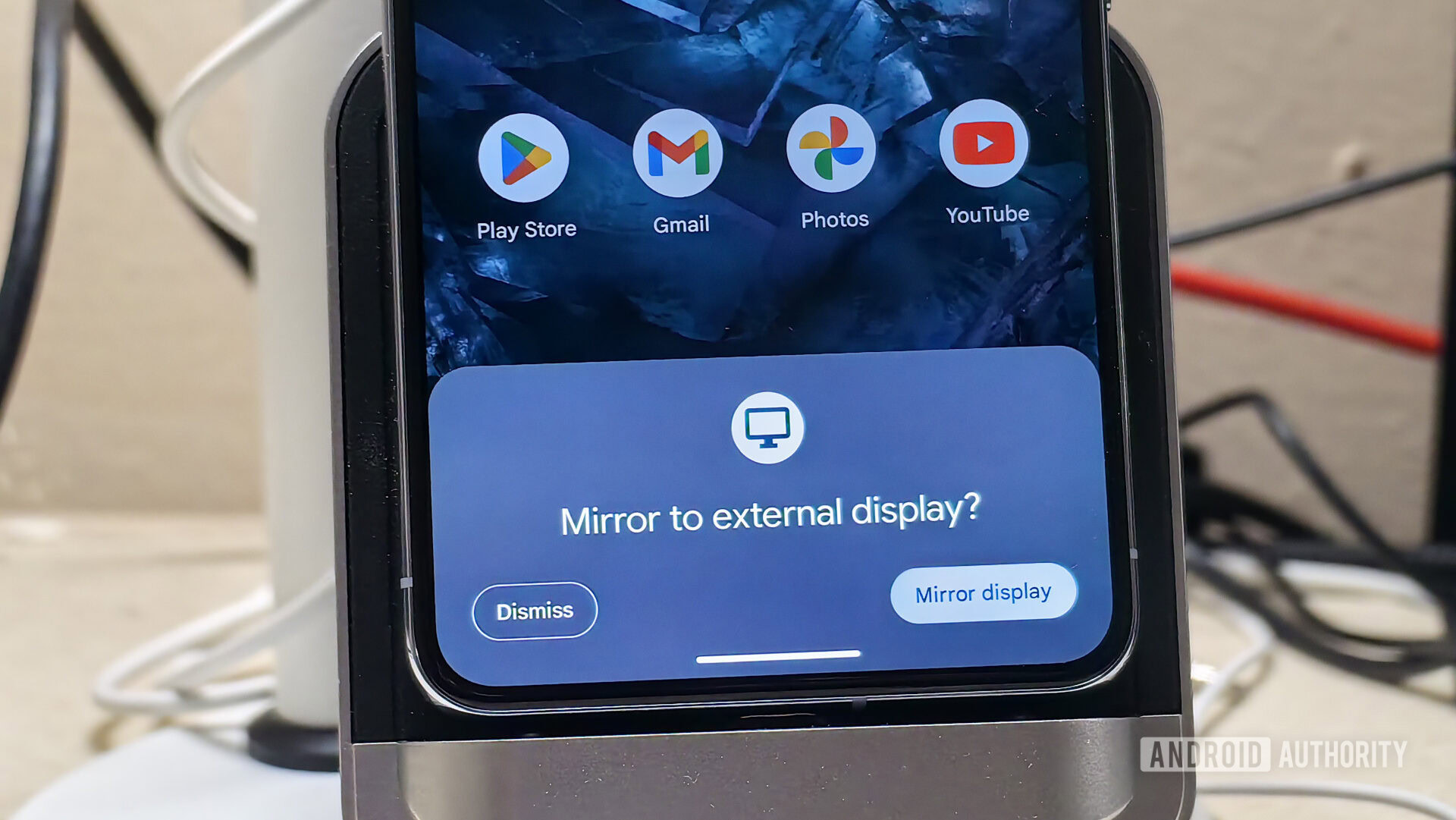Affiliate links on Android Authority may earn us a commission. Learn more.
Google finally enables display output on the Pixel 8, here's what it could mean for a DeX-like mode

- Not a single Google Pixel phone supports display output over USB-C unless you buy a special DisplayLink peripheral.
- When Google launched the Pixel 8 series, we discovered that the phones actually support display output over USB-C at a hardware level.
- With the release of the latest Android beta, Google has finally enabled display output over USB-C on the Pixel 8 series.
If you ask a power user what features they love about their Samsung phone, Samsung DeX is probably near the top of the list. DeX lets you turn your Galaxy phone into a portable desktop environment when hooked up to an external monitor or TV. Sadly, Google’s version of Android doesn’t offer a DeX equivalent at the moment. What’s more, Google has opted to forego display output support entirely on its Pixel lineup, so you can’t even mirror your Pixel phone’s display to an external screen unless you buy a special peripheral. However, that’s finally changing with the Google Pixel 8 in the latest Android beta.
When you hook up any Pixel phone — from the very first model to the most recent Pixel 8 Pro model — to an external monitor or TV using a USB-C to USB-C cable or a USB-C to HDMI adapter, nothing currently happens. This is because Google opted not to enable a feature called DisplayPort Alternate Mode on their Pixel lineup. DisplayPort Alternate Mode lets devices transmit a DisplayPort signal over their existing USB-C connector pins, which is useful for mobile devices that don’t have enough room to add a dedicated port for HDMI or DisplayPort.
Unfortunately, Google disabled DisplayPort Alternate Mode at a hardware level on all of their Pixel phones before the Pixel 8 series. It’s not exactly clear why Google disabled this feature at the factory, though some have speculated it’s to push users towards Google’s proprietary, wireless Cast protocol for screen mirroring. I believe the main reason is that Pixels currently lack a native, DeX-like desktop mode, though.
Android has actually offered a built-in desktop mode since Android 10, but it’s currently incredibly bare-bones and only meant for developers to use. Google has been steadily working to improve Android’s built-in desktop mode since late 2022, with the end goal to eventually bring the feature to users, perhaps with the upcoming Android 15 release.

Since Google needs physical hardware to test their desktop mode changes on, the company quietly enabled DisplayPort Alternate Mode on a hardware level on the Pixel 8 series. As I mentioned earlier, though, nothing happens when you actually hook a Pixel 8 or Pixel 8 Pro up to an external monitor. This is because DisplayPort Alternate Mode is disabled in the phones’ software, requiring root access to enable.
With the recent release of Android 14 QPR3 Beta 2, however, Google reversed course and enabled DisplayPort Alternate Mode by default in the Pixel 8’s software. As a result, when you connect your Pixel 8 or Pixel 8 Pro to an external screen using a compatible USB-C to USB-C or USB-C to HDMI adapter, you’ll now be met with an option to “mirror display,” as shown below.

By default, tapping “mirror display” will mirror your phone’s screen to the external display. If you enable “force desktop mode” in Android’s developer options, then your phone will show Android’s built-in desktop mode which, as I said before, is fairly bare bones. Android’s revamped desktop mode experience is currently locked behind several flags, so it won’t be available to users even if the “force desktop mode” option is enabled.
It’s possible that Google will launch Android’s revamped desktop mode experience in Android 15 alongside the upcoming Pixel 9 series, but we don’t know for sure. We also don’t know if Google intended to enable DisplayPort Alternate Mode in the QPR3 Beta 2 release for the Pixel 8; it’s possible this was a mistake and will be reverted in the next beta or in the stable release in June. Either way, we’ll keep an eye on this feature to see what happens.
It’s also worth noting that although older Pixel phones can never be upgraded to support DisplayPort Alternate Mode, it is still possible to mirror their display to an external screen. Special DisplayLink adapters can be hooked up to Pixel phones to enable display output. These require the installation of an app onto the phone that records the screen, compresses it, and sends the data to the DisplayLink adapter as if it were a standard USB peripheral. The DisplayLink adapter then converts the data to a video that HDMI-capable devices can read.
Special thanks to X user Jordan Long for the tip!